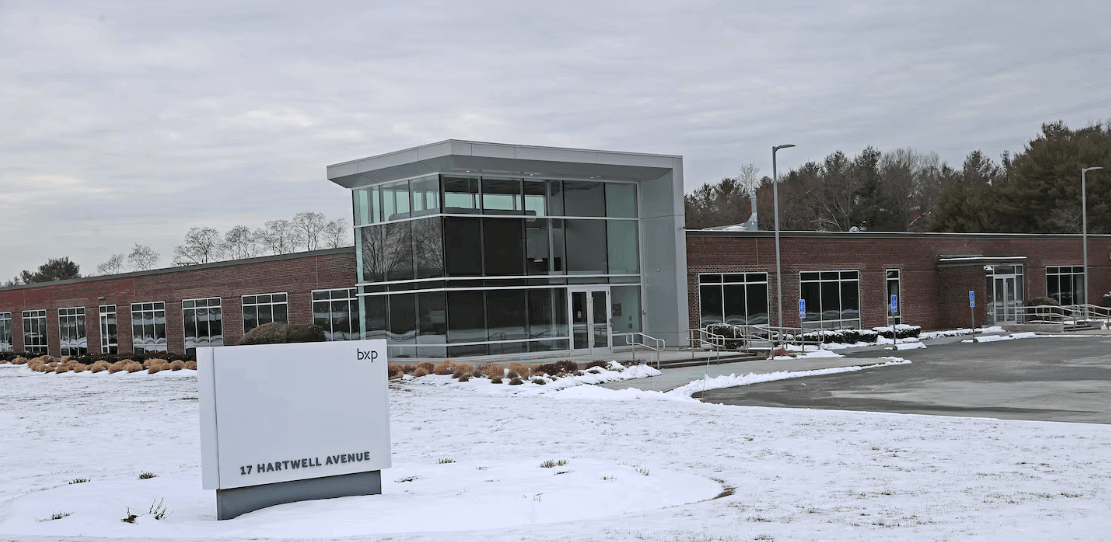住房的下一个前沿:郊区办公园区

【中美创新时报2025 年 2 月 14 日编译讯】(记者温友平编译)商业房地产的持续混乱让开发商、投资者、规划师等都在创造性地思考如何重新利用现有房产——而不仅仅是在市中心。拥有过时办公楼的开发商越来越多地希望用公寓取而代之。对此,《波士顿环球报》记者凯瑟琳·卡洛克作了下述详细报道。
几十年来,位于列克星敦哈特韦尔大道的两栋不起眼的单层房产一直是波士顿地产资产负债表上的稳定表现。这家现名为 BXP 的办公楼开发商从未遇到过租赁这些大楼的问题,这些大楼位于汉斯科姆空军基地的街对面。
“它们总是会重新填满,”BXP 的波士顿地区首席执行官 Bryan J. Koop 说。“我们在那里拥有的那些建筑从未出现过入住率问题。但这是否是现在最高和最好的用途?”
直到莱克星顿镇官员打来电话——这通电话甚至在 COVID-19 疫情和 MBTA 社区法案之前就打来了——这家开发商,大波士顿最大的写字楼业主之一,才开始考虑其他选择。实验室、零售或分销能在那里发挥作用吗?然而,莱克星顿想要住房。如今,BXP 正在哈特韦尔大道建造一个拥有 312 个单元的公寓大楼。
商业房地产的持续混乱让开发商、投资者、规划师等都在创造性地思考如何重新利用现有房产——而不仅仅是在市中心。
事实上,总部位于牛顿的商业经纪公司 128 CRE 的高级合伙人 Jeremy A. Freid 表示,波士顿郊区的许多业主都在审查他们的资产,看看拆除它们并建造多户住宅是否合理。在持续的后疫情时期,郊区写字楼受到重创;据房地产公司 Newmark 称,仅去年一年,128 号公路和 495 号公路沿线就有超过 200 万平方英尺的办公空间被空置。与此同时,住房需求依然强劲。
“这似乎是一种在一定程度上不受经济衰退影响并能度过所有这些周期的资产类别,”Freid 说。
虽然波士顿市中心的办公改住宅计划已经让开发商在未充分利用的办公空间中提出数百套公寓——以换取城市税收减免——但郊区项目的出现速度要慢一些。这是更多市政当局正在考虑的事情,特别是州法律要求对公共交通站点附近的多户公寓进行重新分区。
许多人仍然希望生命科学繁荣的回归,或者希望项目能产生比住房更多的利润。但在建筑业普遍放缓的情况下,一些开发商和业主渴望开展任何形式的工作。
“有些办公园区土地面积大,密度低,还有这么多空置的停车场,”Koop 说。“我们绝对看到了机会。”
大波士顿地区郊区的办公楼库存大多被认为功能过时——租户没有需求,太过陈旧,不值得进行有意义的现代化投资。对于许多郊区办公室来说,已经在这里住了几十年的租户要么缩小规模,要么完全离开。根据经纪公司 Colliers 的研究,截至年底,约有 23% 的办公空间可供出租,这是 20 多年来的最高水平。
当然,在许多社区,建造新住房,尤其是公寓,可能很难推销。现有的房主和居民经常反对任何住宅提案,他们担心学校人满为患、下水道溢出,或者街上有更多的汽车。
一些城镇不愿放弃商业地产的房地产税,因为商业地产的税率通常高于住宅地产。但对于一栋 50 年历史的办公室来说,没有人上门租赁——而且需要对建筑系统进行昂贵的升级,才能让租户进门——这栋房产的评估价值很可能会下降,最终意味着该镇的税收收入减少,昆西市 Jumbo Capital Inc. 的高级副总裁 Nick Trocki 说。
“我们的目标是能够与这些城镇合作,帮助他们认识到这一点,同时也能够收回一些损失的评估价值和房地产税收入,”Trocki 说。
Trocki 已经向许多郊区社区推销允许在目前空置的商业办公室和空置停车场进行不同的房地产用途。他认为有更多多户住宅开发的机会,但他承认改变分区需要时间。
“这肯定是每个城镇都面临的问题,”Trocki 说道,并补充说郊区有大量未充分利用的商业地产。“为什么不允许这些覆盖层覆盖在它们之上?”
开发商和其他寻找再开发机会的人也会发现,与过去几年相比,现在的购买环境要便宜得多,当时办公室改建为实验室的热潮推高了郊区办公室的价格。
根据经纪公司 Avison Young 的研究,到去年年底,郊区办公室销售的平均每平方英尺价格降至 124 美元——低于近二十年前,即 2005 年最后一个季度的每平方英尺 136 美元的平均价格。目前的平均价格比 2022 年中期达到的每平方英尺 220 美元的价格低了近 100 美元。
大多数情况下,重新利用郊区办公室意味着拆除建筑物并从平坦的场地开始。波士顿房地产公司 Marcus Partners 的首席投资官 Ryan McDonough 表示,此类项目本身就面临着许多后勤挑战。
“你必须了解场地,”McDonough 说。“它是平坦的吗?它足够大,可以容纳你想要在那里进行的用途吗?”
工业和多户住宅用途都需要比传统办公空间更多的土地来扩展。分区通常是最具挑战性的部分。许多办公楼场地不允许建造住房,说服社区改变规则可能很难。
对于总部位于波士顿的房地产开发公司 Cabot, Cabot & Forbes 来说,这一挑战显而易见,该公司在该公司认为符合 MBTA 社区法案的地区开展了多户住宅项目。首席执行官杰伊·多赫蒂 (Jay Doherty) 表示,该公司不得不取消纳蒂克、沃尔瑟姆和利特尔顿等社区的约 800 套公寓,花费约 60 万美元的开发前押金和设计费用,因为这些社区“没有在 MBTA 车站附近进行分区,或者至少没有以对实际开发有用或可行的方式进行分区。”
多赫蒂表示,在某些地区(如列克星敦的哈特韦尔大道房产),如果可以进行分区,那么低层办公楼或研发大楼将成为多户住宅开发的良好候选。
“如果它们足够老,位置优越,并且经过分区,”多赫蒂说。“如果分区(尤其是 MBTA 分区)允许住宅开发,我可以保证会有人尝试。但地点太少了。”
题图:办公巨头 BXP 计划将位于列克星敦哈特韦尔大道的这座办公大楼改建为公寓。David L. Ryan/Globe 员工
附原英文报道:
The next frontier for housing: Suburban office parks
Developers with obsolete office buildings are increasingly looking to replace them with apartments
By Catherine Carlock Globe Staff,Updated February 14, 2025
Office giant BXP is planning to convert this office complex on Hartwell Ave. in Lexington into apartments.David L. Ryan/Globe Staff
For decades, two unassuming single-story properties on Hartwell Avenue in Lexington were steady performers on the Boston Properties balance sheet. The office developer now known as BXP had never had an issue leasing the buildings, located just down the street from Hanscom Air Force Base.
“They would always get refilled,” said BXP’s chief Boston-area executive Bryan J. Koop. “Those buildings we have there, we’ve never had an occupancy issue. But is it the highest and best use now?”
It wasn’t until a cold call from a Lexington town official — one that came in even prior to the COVID-19 pandemic and the MBTA Communities Act — that the developer, which is one of Greater Boston’s biggest office landlords, began considering other options. Would a lab work there, or retail, or distribution? Lexington, however, wanted housing. Today, BXP is well on its way to building a 312-unit apartment complex on Hartwell Avenue.
The ongoing disruption in commercial real estate has developers, investors, planners, and more thinking creatively about how to repurpose existing property — and not just in downtown.
Indeed, Jeremy A. Freid, senior partner at Newton-based commercial brokerage 128 CRE, said many property owners in Boston’s suburbs are examining their holdings to see whether demolishing them and building multifamily housing makes sense. In an ongoing post-Covid shakeout, suburban office has been hit hard; along Route 128 and 495, more than 2 million square feet of office space has been emptied in the last year alone, according to real estate firm Newmark. Demand for housing, meanwhile, remains robust.
“That seems to be the one asset class that is somewhat recession-proof and can navigate through all these cycles,” Freid said.
While downtown Boston’s office-to-residential program has seen developers propose hundreds of apartments in underutilized office space — in exchange for a city tax break — suburban projects have been a bit slower to emerge. It’s something more municipalities are contemplating, particularly with a state law requiring rezoning for multifamily apartments near public transportation stops.
Many still hold out hope for a return of the life-science boom, or for projects that generate more profit than housing. But amid a broad building slowdown, some developers and property owners are eager to get any kind of work going.
“There’s office parks that have a tremendous amount of land and low density, and you’ve got all these empty parking fields,” Koop said. “We absolutely see the opportunity.”
Much of Greater Boston’s suburban office stock is considered functionally obsolete — not in demand by tenants, too dated to warrant meaningful investment in modernizing. For many suburban offices, tenants that have been in place for decades have either downsized or left entirely. Some 23 percent of office space was available to lease at the end of the year, according to research from brokerage Colliers, the highest rate in more than 20 years.
Of course, building new housing, especially apartments, can be a tough sell in many communities. Existing homeowners and residents often push back against any residential proposals, with fears of overrun schools and overflowing sewer lines, or more cars on the streets.
Some towns and cities are loath to give up the real estate tax that comes from commercial properties, which are typically taxed at a higher rate than residential. But for a 50-year-old office that has nobody knocking on its door to lease — and with expensive upgrades to building systems that would be necessary to even get a tenant in the door — it’s likely that the property’s assessed value would decline, ultimately meaning less in tax revenue for the town, said Nick Trocki, senior vice president with Quincy-based Jumbo Capital Inc.
“Our goal is to be able to work with those towns to help them recognize that, but also be able to recoup some of those lost assessed values and real estate tax income,” Trocki said.
Trocki has pitched many suburban communities about allowing different real estate uses at what are now vacant commercial offices and empty parking lots. He sees opportunity for more multifamily residential development but acknowledges that changing zoning will take time.
“It’s certainly town by town,” Trocki said, adding that there’s a surfeit of underutilized commercial property in the suburbs. “Why wouldn’t you allow these overlays to go on top of them?”
Developers and others looking for redevelopment opportunity will also find a much less expensive buying environment than the past several years, when the office-to-lab conversion boom inflated the prices of suburban offices.
By the end of last year, the average price per square foot for suburban office sales dropped to $124 — less than the average per-square-foot price of $136 reached nearly two decades ago, in the final quarter of 2005, according to research from brokerage Avison Young. The current average is nearly $100 less than the $220 per-square-foot rate reached in mid-2022.
Most of the time, repurposing suburban offices would mean razing the buildings and starting with a flat site. Such projects come with a number of logistical challenges of their own, said Ryan McDonough, chief investment officer at Boston-based real estate firm Marcus Partners.
“You have to understand the site,” McDonough said. “Is it flat? Is it large enough to accommodate the use you want to put together there?”
Both industrial and multifamily uses need more land to spread out on than a traditional office footprint. Zoning is often the most challenging component. Many office building sites do not allow for housing, and convincing communities to change the rules can be a tough sell.
That challenge was clear for Cabot, Cabot & Forbes, a Boston-based real estate development firm that has pursued multifamily projects in areas the firm thought would comply with the MBTA Communities Act. Chief executive Jay Doherty said the firm has had to cancel some 800 units in communities like Natick, Waltham, and Littleton — at a cost of about $600,000 in predevelopment deposits and design — after the communities “did not zone near the MBTA stations, or at least did not zone in a way that was useful or feasible for actual development.”
In some areas — like the Hartwell Avenue properties in Lexington — there are low-rise office buildings or research and development buildings that would make good candidates for multifamily development, Doherty said — if they can be zoned.
“If they’re old enough, and well located, and zoned,” Doherty said. “If the zoning — particularly MBTA zoning — permits residential development, I can guarantee you someone is going to try it. But there are so few sites.”

